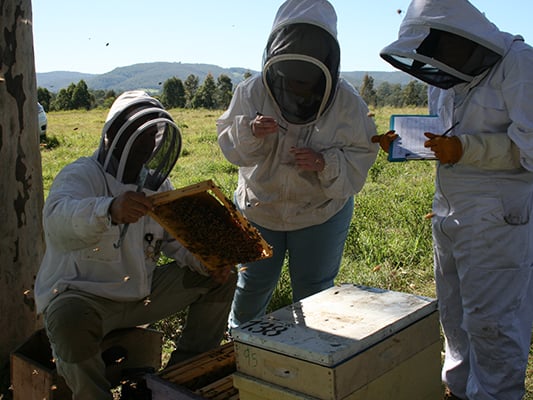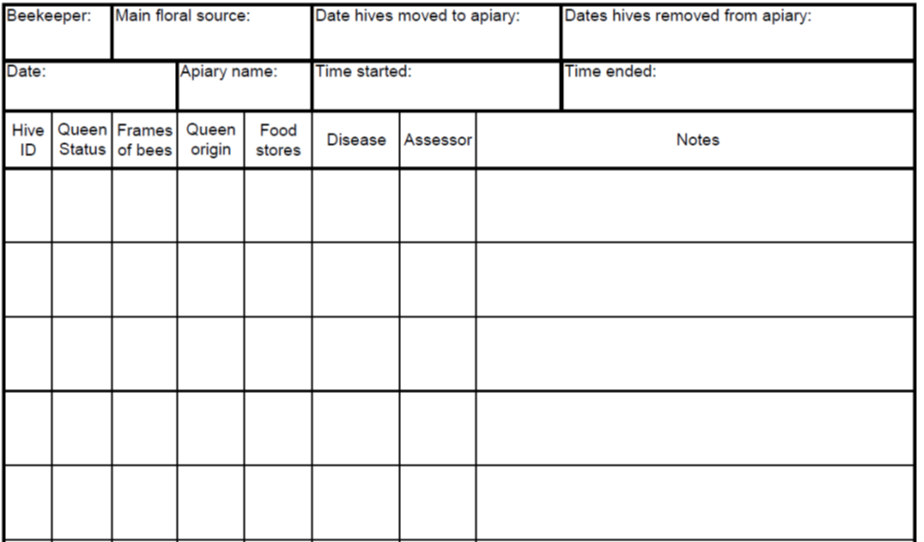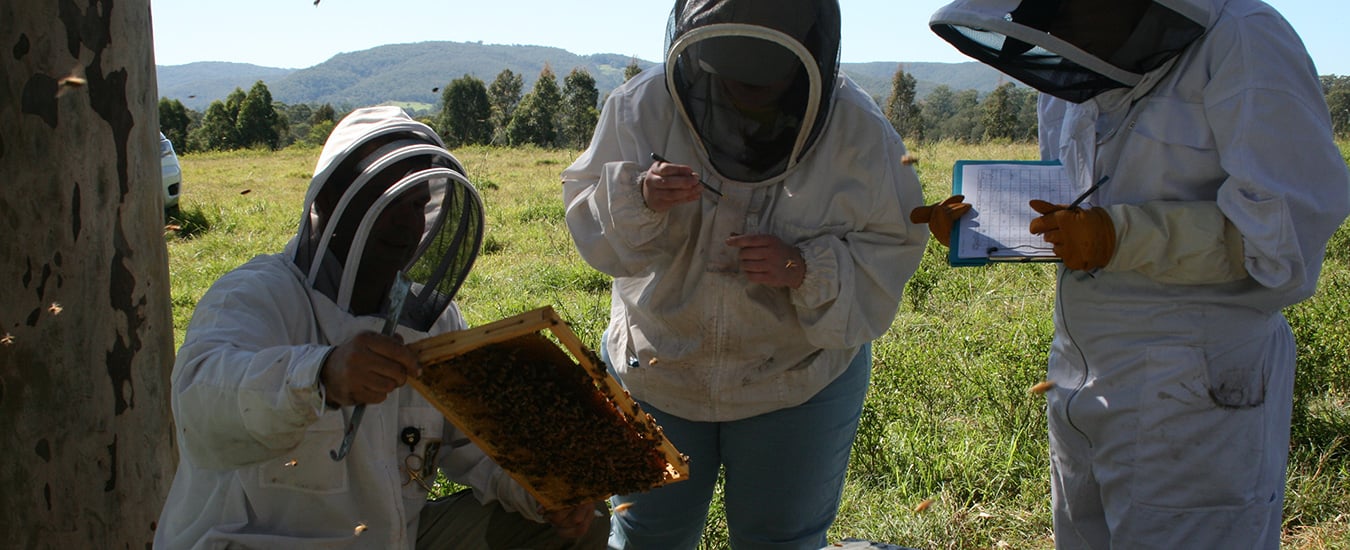Biosecurity is everyone’s responsibility, including beekeepers, but what is biosecurity and how does it help our honey bees?
According to the Department of Health, biosecurity refers to the measures taken to decrease the risk of infectious diseases caused by viruses, bacteria or other microorganisms entering, emerging, establishing or spreading in Australia, potentially harming the Australian population, our food security and economy. Biosecurity is a critical part of the Australian government’s efforts to prevent, respond to and recover from pests and diseases that threaten the economy and environment.
The Australian Honey Bee Industry Code of Practice (The Code) sets the standard for beekeepers’ biosecurity responsibility which includes managing established pests and diseases and monitoring for exotic pests and diseases.
Benefits of record keeping for beekeepers

Beekeepers inspect a hive’s broodnest for diseases, queen quality and food stores. The beekeeper in the middle collects a suspect sample for disease diagnosis and the beekeeper at right records inspection notes.
Good record keeping is essential as it means we can trace the source of a disease outbreak or pest incursion from one hive to the next, or one hive to a group of hives.
It’s important to record information on the health status of your hives, but also for the productivity of your hives and overall business. Tracking pest and disease levels in your hives and understanding your hives’ productivity can be a straightforward, simple process.
The NSW DPI manages the Plan Bee (National Honey Bee Genetic Improvement Program) research hives. Our current data sheet below allows us to record key information whenever we visit an apiary site to inspect hives for pests and diseases.
Such information helps to guide future management decisions. You may find this data sheet useful to record your hive-specific observations. You can change it to suit your exact needs.

Download the sample data sheet.
Filling in the form
At the top of the datasheet are fields which usually apply to all hives in the apiary. We write the name of the beekeeper who is recording information or who owns the hives.
The main floral source is recorded, if known. Different plants provide different nutritional value to honey bees which can influence their health.
The date that the hives were moved to and from the apiary, is a recording requirement of The Code. It assists a beekeeper in assessing the nectar flow and other conditions-related influences on honey production or hive health.
Apiary name identifies exactly where the hives were on the date of an assessment. The time of day may be important if there is extreme weather or temperatures on the day. It is also useful in the greater context of the entire season and how overall nutritional resources and environmental conditions lead to the quality of the hives inspected on the day.
Information that may be unique and valuable to record about individual hives includes:
- Hive ID or hive identification, help traceback to the exact hive
- Queen status – is the queen seen (QS), is she dead or queenless (QL), is re-queening (RQ) required?
- Frames of bees – how many frames are completely covered in bees
- Queen origin – what is the background of this queen?
- Food stores – does the hive need a small, medium or big feed of sugar syrup or protein?
- Disease – note any diseases present and their severity
- Assessor – who assessed the hive, so if there are any questions they can be discussed
- Notes – any additional information
Give this data sheet a try or adjust it to suit your record keeping needs.
Additionally the following apps shown in Table 1 below are used by beekeepers who responded to a Professional Beekeepers survey.
Table 1: Methods of record keeping used by beekeepers

The survey indicated 65% of respondents are still using traditional methods for record keeping. Other methods used to record were an Excel spreadsheet or the Amateur Beekeepers Association Log Book.
Acknowledgements:
This article was peer-reviewed by Nadine Chapman and Kelly Lees.


